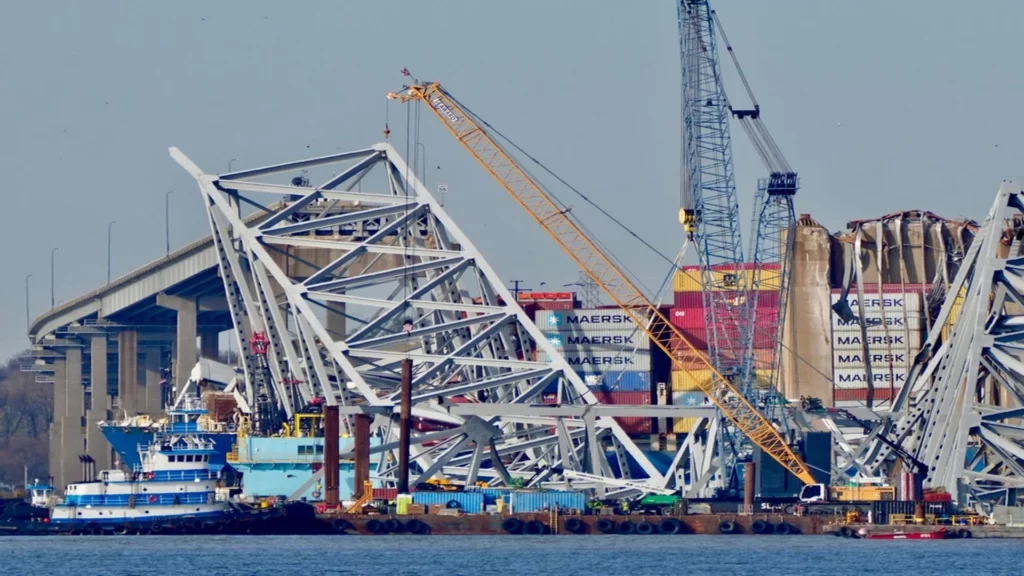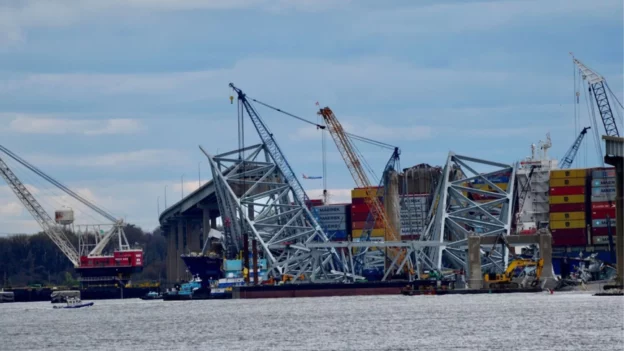In Baltimore, specific demolition techniques will be implemented to clear debris from the Francis Scott Key Bridge, which was brought down by a ship on March 26 . The Key Bridge Unified Response Command plans to use precision cuts with small charges to remove a significant section of the wreckage currently atop the M/V DALI. This method will allow the task to be carried out in a controlled and safe manner.

Small loads and rescue equipment in action
Regarding the timing of outages, this will be determined by a combination of environmental and operational conditions. The use of small charges, which is a common technique in controlled demolition, will facilitate the division of the structure into more manageable parts. This, in turn, will allow rescue teams to employ on-site cranes and barges to transport these segments off the Baltimore Bridge and ultimately clear the M/V DALI from the canal.
Additionally, last Tuesday, May 7, authorities confirmed the discovery of the remains of the sixth victim, a 37-year-old man, who is presumed to be the last person missing in the incident.
“Our primary goal remains the restoration of the maritime transportation system, while ensuring the safety of the public and the protection of the environment. Precision cuts minimize risks to our team and allow us to proceed with canal cleaning efficiently,” said Capt. David O’Connell, Federal Coordinator at the Key Bridge Response Site.
Francis Scott Key Bridge Debris Removal
The technique of precision cutting with small loads is not only used for the effective demolition of structures, but is also part of a broader strategy to mitigate environmental impacts.
This method reduces the amount of scattered debris and potential contaminants during cleanup operations, which is crucial to preserving aquatic biodiversity and water quality in areas like the Port of Baltimore.
Follow us on social networks and don’t miss any of our publications!
Inspenet.com YouTube LinkedIn Facebook Instagram X
Source: safety4sea.com
Photo: Shutterstock

